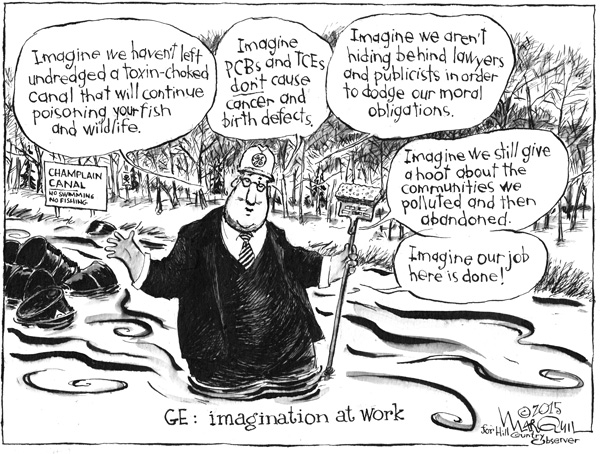Editorial May 2015
E D I T O R I A L
In fight against hunger, Greenwich pantry inspires

Our cover article this month examines the increasing use of emergency food pantries in our region and finds a particularly inspiring story in the Washington County village of Greenwich.
There, a little more than a year ago, a newly formed community group took over a tiny food pantry that operated on a monthly, appointment-only basis on the second floor of the town hall. The group, Comfort Food Community, began opening on a predictable schedule, for four hours every week. It also moved the pantry to a more accessible location and figured out how to make a lot more food available to people in need.
As a result, the Greenwich pantry, which used to serve just a handful of people each month, now helps to feed nearly 100 households every week. And in contrast to some government social service providers whose orientation is to deny or limit aid whenever possible, the food pantry’s programs director, Devin Bulger, summed up his organization’s philosophy this way: “Why not provide the most comprehensive services we can?”
Although Greenwich has seen a dramatic increase over the past 18 months in the number of people seeking emergency food aid, the community’s economic situation hasn’t really changed much in that time. What has changed is the attitude -- and the commitment of resources the community is making in an effort to ensure that no one in the Greenwich area goes hungry. Thanks to Comfort Food Community, dozens of local people who had been struggling to make ends meet are now struggling a bit less.
What’s hard to assess is whether the success in Greenwich can be replicated in other communities in the region. A similar effort to reach more people is under way eight miles away in Cambridge, where the Loaves and Fishes Food Ministry recently moved to a larger, more prominent location on Route 22.
But Greenwich and Cambridge both are small villages in a rural area with considerable income diversity. The Greenwich model might not transfer to a big city where poverty is more concentrated. Even in the small cities of our region, groups providing food aid say demand is so strong that they have to limit how often each household can seek help. In Rutland, for instance, users may visit the Community Cupboard only six times per year.
In most communities, emergency food providers tell of limited resources in the face of a much larger need. So at the macro level, it’s hard to fathom why some members of Congress seem hellbent on gutting the federal food stamp program, which now serves about 15 percent of the U.S. population.
In Washington, many Republicans have focused on the dramatic growth of the program – the number of food-stamp recipients has doubled to 46 million in the past decade – to argue that food stamps are being overused and that benefits are going to people who don’t really need them. But this argument ignores the lingering effects of the near collapse of the economy in 2008-09, and it leaves Republicans sounding like a distant echo of Edwin Meese, the former U.S. attorney general who provoked outrage more than 30 years ago when he explained that the reason more people were using soup kitchens was that “the food is free and that that’s easier than paying for it.”
Yes, if food stamps and emergency food pantries were sharply curtailed, many people who now rely on them probably would find a way to get by. But their struggles unquestionably are easier with help than without.

